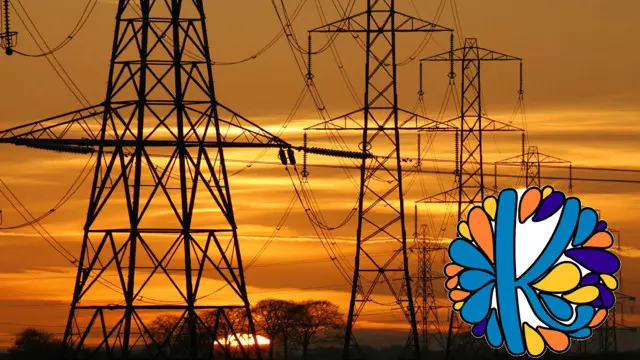
Electrical Design Course from Zero to Hero
Learn everything about electrical low voltage distribution design without any previous knowledge for complete beginners
Summary
- Reed courses certificate of completion - Free
- Tutor is available to students
Add to basket or enquire
Overview
"Ultimate Electrical Design Course Bundle"
The only course which will help you to learn everything about distribution systems design including lighting design using Autocad and Dialux programs, wiring of electrical components, selection of breakers and fuses, design of single line diagram and riser of building, selection of generators, design of earthing systems, light current systems and more.
This course is made of more than 150 lectures to give you the best and most in-depth experience regarding electrical design from zero to hero!
Certificates
Reed courses certificate of completion
Digital certificate - Included
Will be downloadable when all lectures have been completed
Curriculum
-
Course Content 13:44
-
Overview of Electrical Design Course 1:29:52
-
Load Estimation, Generator Room, and Transformer Room 2:16:48
-
Basics of Autocad for Wiring 4:44:12
-
Basics of Lighting Design 2:30:39
-
Lighting Design Using Dialux Evo Program 3:31:34
-
Lighting Design Using Dialux Red Program 1:32:31
-
Rest of Electrical Design Procedure 2:51:52
-
Voltage Drop and Short Circuit Analysis 1:28:40
-
Cables Course 1:38:16
-
Earthing System Design 1:39:36
-
Lightning Protection System 32:59
-
UPS Systems 31:38
-
Power Factor Correction Using Capacitor Banks 32:58
-
Extra Explanation on Circuit Breakers and Fuses 1:12:34
-
Generator Sizing 51:40
-
Panel Boards Construction and Types 1:19:18
Course media
Description
Throughout the course you will learn:
Basics of lighting design including concepts and methods of design.
Design of the lighting system using Dialux Evo.
Design of the lighting system using Dialux Red.
Basics of Autocad Electrical.
Wiring of the electrical system in Autocad that includes luminaries, sockets, and more.
Panel schedule for power and lighting systems.
Selection of circuit breakers and cables.
Drawing the single line diagram of an electrical system and the riser of a building.
Importance of load estimation process and how to do it with a step-by-step lesson.
Load estimation using Excel program.
Transformer room dimensions sizing.
Generator room dimensions sizing.
Voltage drop analysis using manual calculations and the ETAP program.
Short circuit analysis using manual calculations and the ETAP program.
Everything about cables including different types of cables, types of armouring systems, types of insulation, types of cable formation, derating factors, and more.
Sizing of the neutral and the earthing conductors.
Design of the earthing system using manual calculations and the ETAP program.
Design of lightning protection system.
Design of the UPS systems.
The residual circuit breakers, fuses, and breakers used in low, medium, and high voltage circuits.
Construction, types, and components of an electrical panel.
Fire alarm systems in low current systems and how to design them.
CCTV systems in low current systems and how to design them.
MATV systems in low current systems and how to design them.
Data, telephone, and sound systems in low current systems and how to design them.
Everything about the ETAP program from zero to hero.
If you've been looking for ONE ULTIMATE COURSE with in-depth insight into electrical design, take this course.
Who is this course for?
- This course was designed for anyone who wants to know everything about distribution systems design from A to Z.
- It is perfect for complete beginners with zero knowledge.
- It is also awesome for those who would like to refresh their knowledge
Questions and answers
Currently there are no Q&As for this course. Be the first to ask a question.
Reviews
Currently there are no reviews for this course. Be the first to leave a review.
Provider
Khadija Academy was founded by engineer Ahmed Mahdy who is an electrical power engineer and a researcher. He is also an electrical bestselling instructor at more than 30 platforms, teaching electrical engineering, and has helped more than 80,000 students from 198 countries achieve career success with simple and easy courses. He is currently the top-ranked (1st) in the engineering sector of Udemy.
He had received the award for the best master's thesis in the Faculty of Engineering - Ain Shams University for 2022/2023.
Some of his published research works in the top electrical engineering journals worldwide:
1- Transient stability improvement of wave energy conversion systems connected to power grid using anti-windup-coot optimization strategy - Energy Journal - Impact Factor of 9.0.
2- Nonlinear Modeling and Real-Time Simulation of a Grid-Connected AWS Wave Energy Conversion System - IEEE Transactions on Sustainable Energy - Impact Factor of 8.8.
3- Modeling and optimal operation of hybrid wave energy and PV system feeding supercharging stations based on golden jackal optimal control strategy - Energy Journal - Impact Factor of 9.0.
4- State-of-the-Art of the most commonly adopted wave energy conversion systems - Ain Shams Engineering Journal - Impact Factor of 6.0.
5- Optimal Design of Fractional-Order PID Controllers for a Nonlinear AWS Wave Energy Converter Using Hybrid Jellyfish Search and Particle Swarm Optimization - Fractal and Fractional - Impact Factor of 5.4
6- Dynamic performance enhancement of nonlinear AWS wave energy systems based on optimal super-twisting control strategy - Ain Shams Engineering Journal - Impact Factor of 6.0.
Legal information
This course is advertised on Reed.co.uk by the Course Provider, whose terms and conditions apply. Purchases are made directly from the Course Provider, and as such, content and materials are supplied by the Course Provider directly. Reed is acting as agent and not reseller in relation to this course. Reed's only responsibility is to facilitate your payment for the course. It is your responsibility to review and agree to the Course Provider's terms and conditions and satisfy yourself as to the suitability of the course you intend to purchase. Reed will not have any responsibility for the content of the course and/or associated materials.

